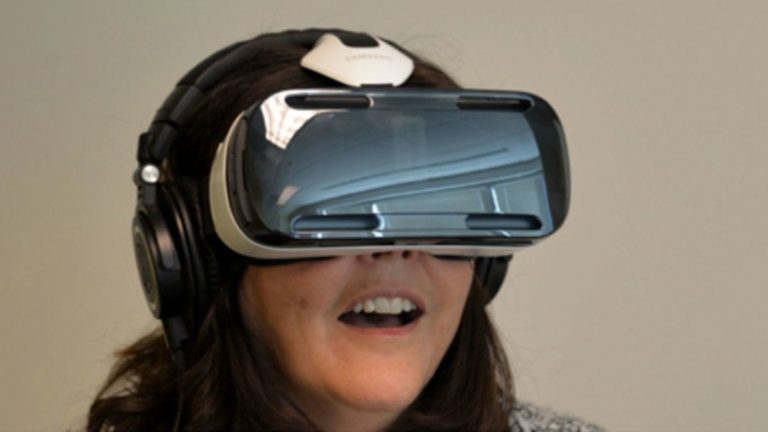Consumer
Is Virtual Reality the Next Big Thing?

In the Advanced Technology Group at CableLabs I get to play with all the best toys, trying to work out what is a challenge or an opportunity, and what is a flop waiting to be unwrapped. 3D is a great case study. I first got to work with 3D TV in 1995 (in a prior life), with an early set of shutter glasses and a PC display. Back then it faced the chicken and egg problem - no TVs, and no content. Which would come first?
I still remember the first 3D video I saw in 1995. It was high quality, high frame rate, and beautiful, but not compelling. I still didn’t find it compelling in 2010 when the 3D TV/content logjam was broken.
I remember the first time I saw Virtual Reality video at CES in January 2014. My reactions were starkly different. The first VR Video I saw was grainy, blurry, and a little jerky. And it was incredibly compelling. I was hooked.
You can’t talk about VR - you have to experience it
Lots of people talk about VR - they “get it” in their heads. You see video playing, and you can look all around. And you can look stupid with a headset on. But you don’t really get it until you experience some good content in a good headset.
This doesn’t convey what it feels like see elephants up close. Everyone loves elephants, and with a headset you feel like you are meeting one for the first time, in their natural habitat.
And this doesn’t convey the reaction of stepping back to avoid getting wet feet, with icy cold Icelandic water.
So we have been doing a couple of things. We have been showing the headsets to people at the CableLabs conferences, where we got almost half the attendees to try on a headset and experience it first hand. We also wanted to put some market research behind it, so we designed some consumer panels to get regular consumer feedback across a representative demographic cross-section.
VR Is Only For Gamers. Or Not.
A lot of the early focus for the Oculus Rift (and Crystal Cove) headset has been around gamers and gaming. It is the perfect add-on for the gamer, where every frame is rendered in real time and you can go beyond “looking around” on the PC screen to just looking around. I had the pleasure of getting a tour and demo of the HTC Vive headset at Valve’s headquarters in Bellevue, and there you can walk around in addition to looking around. It is the closest thing to a Holodeck that I have ever experienced. I think we can reasonably expect these to go mainstream within the gaming community.
But the consumption of 360° video has much more importance to cable, as mentioned by Phil McKinney in this Variety interview, because of the need for high bandwidth to deliver the content. We’ll look at that in more detail in a future blog post.
Rather than use our own tech-geek, early-adopter attitudes to evaluate this, we wanted to get a representative sample of the general population and ask their opinions. So that’s what we did. With some excellent 360° video content from Immersive Media, a former Innovation Showcase participant, we asked regular people, with regular jobs. Like teachers, nurses, students, physical therapists, personal trainers, and a roadie. We tried to come up with some different display technologies to compare against, and showed them the Samsung GearVR with the content. Here’s what they told us:
57% “Had to have it”. 88% could see themselves using a head-mounted display within 3 years. Only 11% considered the headset to be either uncomfortable or very uncomfortable. 96% of those who were cost sensitive would consider a purchase at a $200 price point (the GearVR is a $200 add-on to the Samsung Galaxy Note 4 or Galaxy S6 phone).
So this seems overwhelmingly positive. There is the novelty factor to take into account, but we were surprised by how few expressed any discomfort and how positively regular people described the experience.
“VR is the most Important Development since the iPhone”
I had the distinct pleasure of spending time on stage with Robert Scoble during his keynote at the recent CableLabs Summer Conference. We discussed the state of the art in head-mounted displays, 360° cameras and content (we’ll talk more about that in later blog posts) but he expressed this sentiment (paraphrased): “Virtual reality is the most important technology development since the original iPhone”. I hadn’t thought about it that way, and now I agree with him. This is not just hot and sexy, a passing fad. It has massive potential to transform lots of what we do, and we can all expect incredible developments in this space.
I want to meet Palmer Luckey
Palmer Luckey created his first prototype head-mounted display at age 18. Four years later he sold Oculus to Facebook for $2 billion, having dropped out of school to build more prototypes. I didn’t see the Facebook deal coming, and didn’t understand it. Now I get it. I want to meet him and thank him for transforming our lives in ways we cannot imagine. We just haven’t witnessed it yet. We will explore more in the next few posts.
Steve Glennon is a Principal Architect in the Advanced Technology Group at CableLabs.



